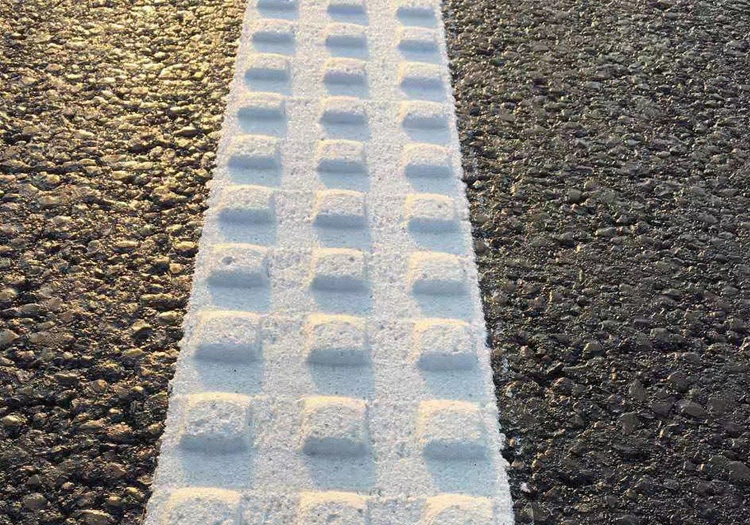The Importance of Reflectivity in Pavement Marking Paint: Enhancing Road Safety and Visibility
【Summary Description】 Discover how reflective pavement marking paint significantly improves road safety and visibility. Learn about its applications, benefits, and the science behind reflectivity in this comprehensive guid
The Importance of Reflectivity in Pavement Marking Paint
Table of Contents
1. Introduction to Pavement Marking Paint
2. Understanding Reflectivity in Pavement Marking Paint
3. Benefits of High Reflectivity in Road Markings
3.1 Enhanced Visibility at Night
3.2 Increased Safety for Drivers and Pedestrians
4. Types of Reflective Materials Used in Pavement Marking Paint
4.1 Glass Beads
4.2 Retroreflective Pigments
4.3 Luminescent Materials
5. Factors Influencing Reflectivity in Pavement Marking Paint
5.1 Paint Composition and Properties
5.2 Application Techniques
5.3 Environmental Considerations
6. Best Practices for Applying Reflective Pavement Marking Paint
7. Common Applications of Reflective Pavement Marking Paint
8. Frequently Asked Questions (FAQs)
9. Conclusion
1. Introduction to Pavement Marking Paint
Pavement marking paint serves as a critical component in road safety, guiding drivers and pedestrians alike. It delineates lanes, indicates crosswalks, and provides essential information that enhances traffic flow and safety. While various factors contribute to the effectiveness of pavement markings, **reflectivity** stands out as a crucial characteristic that can dramatically impact visibility, especially at night or in adverse weather conditions.
2. Understanding Reflectivity in Pavement Marking Paint
Reflectivity refers to the ability of a surface to reflect light, which plays an essential role in ensuring visibility on roadways. Pavement marking paints with high reflectivity can significantly enhance the perception of road markings, assisting drivers in navigating safely under various conditions. As vehicles approach, the reflective properties of the paint help convey critical information quickly and effectively.
3. Benefits of High Reflectivity in Road Markings
The advantages of using **highly reflective pavement marking paint** extend beyond mere visibility. Below are some of the key benefits:
3.1 Enhanced Visibility at Night
During nighttime driving, the importance of visibility cannot be overstated. Reflective pavement marking paint dramatically increases the visibility of road markings, making them easily discernible to drivers. This enhancement is achieved through the use of reflective materials embedded within the paint, allowing them to bounce light back towards the source, such as vehicle headlights.
3.2 Increased Safety for Drivers and Pedestrians
By improving visibility, the use of reflective pavement marking paint significantly increases safety for both drivers and pedestrians. Clear delineation of lanes, crosswalks, and other critical areas helps to reduce accidents, particularly in low-light situations. Studies have shown that roads with high reflectivity markings experience lower accident rates, underscoring the importance of investing in quality pavement marking solutions.
4. Types of Reflective Materials Used in Pavement Marking Paint
Various materials are utilized to enhance the reflectivity of pavement marking paint. Understanding these materials can help in selecting the most effective solutions for specific applications.
4.1 Glass Beads
Glass beads are one of the most common and effective materials used to increase the reflectivity of pavement markings. When applied to wet paint, these beads become embedded in the surface, allowing them to reflect light effectively. Their spherical shape and smooth surface maximize the return of light, making them a popular choice for high-visibility applications.
4.2 Retroreflective Pigments
These pigments work by utilizing an optical phenomenon that redirects light back toward the source. Retroreflective pigments are added to the paint mix, enhancing reflectivity even without the use of additional glass beads. This technology is particularly beneficial for paints used in areas with higher traffic volumes.
4.3 Luminescent Materials
Innovative luminescent materials can absorb light during the day and emit it during the night, providing a glow-in-the-dark effect. While not a substitute for traditional reflective materials, these pigments can be an effective complement, ensuring that road markings remain visible even in total darkness.
5. Factors Influencing Reflectivity in Pavement Marking Paint
Several factors can influence the overall reflectivity of pavement marking paint, impacting its effectiveness:
5.1 Paint Composition and Properties
The formulation of pavement marking paint plays a significant role in its reflective capabilities. The type and quality of resins, pigments, and additives can affect not only reflectivity but also durability and resistance to weathering. High-quality paints formulated specifically for optimal reflectivity will outperform standard products in various conditions.
5.2 Application Techniques
The method of application is crucial in achieving desired reflectivity levels. Professional application techniques ensure that the paint is applied uniformly, allowing for proper adhesion and the effective embedding of reflective materials. Techniques such as spray application or the use of specialized equipment can enhance the overall outcome.
5.3 Environmental Considerations
Weather conditions during application can significantly impact the performance of reflective pavement markings. Proper temperature and humidity levels are necessary to ensure the paint cures effectively, allowing reflective materials to bond properly. Additionally, environmental factors like rainfall and temperature fluctuations can influence the longevity of reflectivity.
6. Best Practices for Applying Reflective Pavement Marking Paint
To maximize the effectiveness of reflective pavement marking paint, follow these best practices:
1. **Choose the Right Materials**: Select high-quality paint with proven reflective capabilities and suitable materials for your specific application.
2. **Surface Preparation**: Ensure the surface is clean, dry, and free from debris before application. Proper preparation enhances adhesion and performance.
3. **Timing of Application**: Apply paint during favorable weather conditions to ensure optimal curing and bonding of reflective materials.
4. **Utilize Professional Services**: Hiring experienced contractors can ensure that application techniques meet industry standards, resulting in better quality markings.
5. **Routine Maintenance**: Regular inspections and maintenance of pavement markings will help ensure continued performance and visibility.
7. Common Applications of Reflective Pavement Marking Paint
Reflective pavement marking paint finds numerous applications across various settings, including:
- **Highways and Main Roads**: Essential for lane markings, edge lines, and directional arrows, ensuring safe navigation for high-speed traffic.
- **Urban Areas**: Used for crosswalks, bike lanes, and other critical markings to enhance pedestrian and cyclist safety in dense traffic environments.
- **Parking Lots**: Enhances the visibility of parking lines and directional arrows, aiding in efficient vehicle flow.
- **Airports**: Vital for marking runways, taxiways, and ramp areas to ensure safe aircraft movement.
8. Frequently Asked Questions (FAQs)
What is the role of reflectivity in pavement marking paint?
Reflectivity enhances the visibility of road markings, especially at night or in poor weather conditions, improving safety for all road users.
How do glass beads improve pavement marking paint?
Glass beads embedded in the paint reflect light back towards the source, increasing the visibility of road markings significantly.
Are there different types of reflective pavement marking paints?
Yes, there are various types, including paints with glass beads, retroreflective pigments, and luminescent materials, each offering unique reflective properties.
What factors affect the longevity of reflectivity in paint?
Factors include paint composition, application techniques, and environmental conditions during and after application.
How often should pavement markings be maintained?
Regular inspections should be conducted, and maintenance should occur as needed—typically every 1-2 years, depending on traffic volume and environmental factors.
9. Conclusion
The importance of reflectivity in pavement marking paint cannot be overstated. With its ability to enhance visibility and contribute to road safety, investing in high-quality reflective materials is imperative for municipalities, contractors, and safety advocates. By understanding the various factors that influence reflectivity and employing best practices in application and maintenance, stakeholders can significantly improve the effectiveness of pavement markings. Ultimately, these efforts will foster safer roadways for drivers, pedestrians, and cyclists alike.
Related Notes







